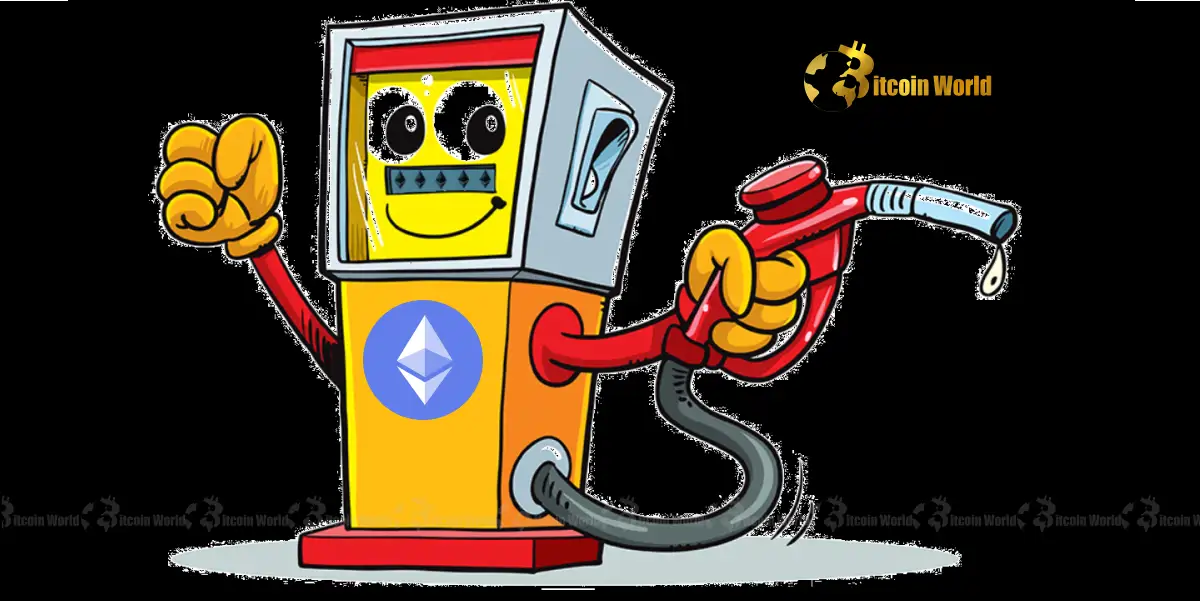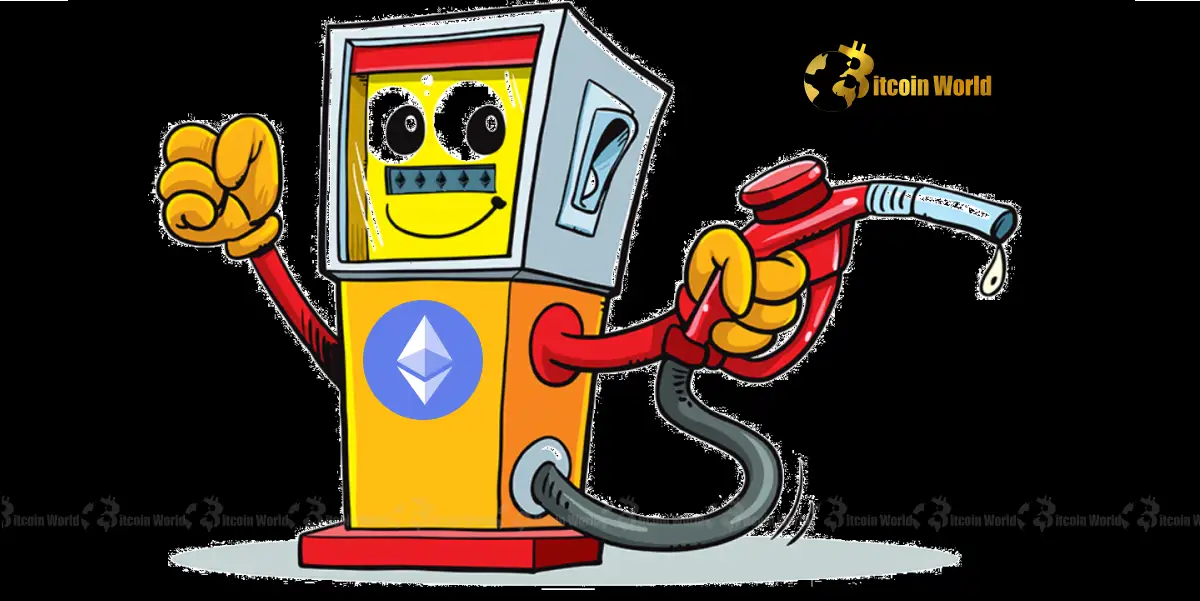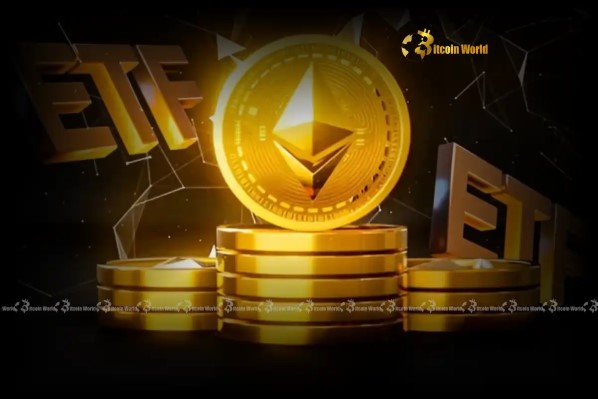BitcoinWorld

Ethereum Gas Fees Explode: Unpacking the ERA Airdrop’s Staggering Impact
Are you feeling the pinch of rising transaction costs in the decentralized world? If you’ve been active on the Ethereum network lately, you’ve likely noticed a significant spike in what’s known as Ethereum gas fees. This surge wasn’t just a random fluctuation; it was directly tied to a major event that sent ripples through the crypto market: the highly anticipated ERA airdrop.
What Just Happened to Ethereum Gas Fees?
The digital air was thick with anticipation as the ERA airdrop began opening its claims. For many in the crypto community, airdrops are exciting opportunities to receive free tokens, but they often come with a hidden cost: network congestion. Pseudonymous analyst @ai_9684xtpa took to X (formerly Twitter) to report the immediate aftermath. As claims for the ERA airdrop commenced, Ethereum gas fees skyrocketed to an astonishing 36.7 Gwei. To put that into perspective, this isn’t just a minor bump; it represents a significant increase in the cost of executing transactions on the blockchain. The report further highlighted the sheer volume of activity, with a staggering 30.73 ETH, equivalent to approximately $105,000, burned in just one hour. This rapid burn rate is a clear indicator of intense network demand and the direct consequence of a sudden influx of users rushing to claim their airdropped tokens.
Understanding Gas: Why Do We Pay for It on the Ethereum Network?
Before diving deeper into the ERA airdrop’s impact, let’s quickly demystify gas fees. Think of gas as the fuel for the Ethereum network. Every operation on Ethereum, from sending tokens to interacting with a decentralized application (dApp) or claiming an airdrop, requires computational effort. This effort isn’t free; it consumes ‘gas’.
- What is Gas? It’s a unit that measures the amount of computational effort required to execute operations on the Ethereum blockchain.
- Why Do We Pay? Gas fees compensate miners (or validators, post-Merge) for securing the network and processing transactions. It also acts as a spam prevention mechanism, deterring malicious actors from overloading the network with trivial transactions.
- How is it Measured? Gas is typically measured in Gwei (Gigawei), which is a small denomination of Ether (1 Gwei = 0.000000001 ETH).
- How is the Fee Calculated? Your total transaction fee is determined by multiplying the ‘gas limit’ (the maximum amount of gas you’re willing to spend) by the ‘gas price’ (how much Gwei you’re willing to pay per unit of gas). With EIP-1559, this includes a ‘base fee’ (burned) and a ‘priority fee’ (paid to validators).
When demand for network space is high, like during a popular airdrop, users bid higher gas prices to ensure their transactions are processed quickly, leading to an overall increase in Ethereum gas fees.
The ERA Airdrop Phenomenon: A Catalyst for High Gas Fees
Airdrops are a common marketing strategy in the crypto space, designed to distribute new tokens to a wide audience, often to incentivize adoption or reward early supporters. The ERA airdrop, in particular, generated significant buzz, leading to a massive rush of users attempting to claim their tokens simultaneously. This created a bottleneck on the Ethereum network, akin to a digital traffic jam. When thousands of users try to execute transactions at the same time, the demand for block space skyrockets. This intense competition drives up the gas price, as users are willing to pay more to have their transactions included in the next block. The result? Sky-high transaction costs for everyone, not just those claiming the airdrop.
What is the Impact of High Gas Fees on the Crypto Market?
The ripple effects of high gas fees extend far beyond just individual transaction costs. They have a profound impact on the broader crypto market and its participants:
- Deterring Small Transactions: For users wanting to move small amounts of ETH or interact with low-value dApps, high gas fees can make these activities economically unfeasible. A $5 transaction costing $20 in gas is simply not practical.
- Impacting DeFi and NFTs: Decentralized Finance (DeFi) protocols and Non-Fungible Token (NFT) marketplaces, which heavily rely on the Ethereum network, become less accessible and more expensive to use. This can stifle innovation and adoption in these sectors.
- Driving Users to Layer 2s and Alternative Blockchains: Faced with exorbitant fees, users and developers are increasingly migrating to Layer 2 scaling solutions (like Arbitrum, Optimism, zkSync) or entirely different blockchains (like Solana, Avalanche, Polygon) that offer lower transaction costs. While this can be seen as a challenge for Ethereum’s dominance, it also highlights the network’s need for scalability.
- Centralization Concerns: If only those with deep pockets can afford to transact, it raises concerns about the decentralization ethos of the blockchain, potentially limiting participation to a select few.
Navigating High Transaction Costs: Actionable Insights for Users
So, what can you do when high gas fees strike? While you can’t control the market, you can adopt strategies to mitigate the impact of rising transaction costs:
- Monitor Gas Prices: Websites like Etherscan Gas Tracker or GasNow provide real-time updates on current gas prices. Timing your transactions during off-peak hours (e.g., late night UTC, weekends) can significantly reduce costs.
- Utilize Layer 2 Solutions: For many applications, especially DeFi and NFTs, using Layer 2 scaling solutions built on top of Ethereum can offer dramatically lower fees and faster transaction times. Familiarize yourself with bridges to move assets to these networks.
- Batch Transactions: If you have multiple transactions to make, consider if they can be combined or batched. Some wallets and protocols offer features to do this, saving on individual gas fees.
- Adjust Gas Limits (Carefully): While not recommended for beginners, advanced users can sometimes set custom gas limits. However, setting it too low can result in a failed transaction, costing you the gas fee anyway.
- Consider Alternatives for Small Transactions: For very small transfers or interactions, explore if an alternative blockchain or a centralized exchange might be a more cost-effective option, depending on your needs.
The Future of the Ethereum Network and Gas Fees
The challenges posed by high gas fees are not new to the Ethereum network. Developers have been actively working on long-term solutions to improve scalability and reduce transaction costs. The implementation of EIP-1559 (which introduced the base fee and burning mechanism) was a significant step, aiming to make gas fees more predictable. However, the ultimate solution lies in Ethereum’s ongoing roadmap towards greater scalability.
- The Merge and Beyond: While The Merge transitioned Ethereum to Proof-of-Stake, it primarily focused on energy efficiency and security. The next major phase, often referred to as ‘The Surge’ (with Sharding), aims to drastically increase transaction throughput.
- Rollups (Layer 2s): These technologies are already playing a crucial role, bundling many transactions off-chain into a single transaction on the mainnet, significantly reducing gas usage. They are seen as Ethereum’s primary scaling solution in the short to medium term.
- Proto-Danksharding and Danksharding: Future upgrades like these will further enhance the capacity for rollups by providing more data space on the mainnet, making Layer 2 transactions even cheaper.
While events like the ERA airdrop highlight the current limitations, they also underscore the urgent need for these scalability solutions to be fully implemented, ensuring Ethereum remains the leading smart contract platform for the global crypto market.
A Glimpse into Ethereum’s Dynamic Landscape
The recent surge in Ethereum gas fees, triggered by the ERA airdrop, serves as a powerful reminder of the dynamic and sometimes volatile nature of the crypto market. It underscores the fundamental economic principles of supply and demand at play on the Ethereum network. While high gas fees can be frustrating for users, they also highlight the immense demand for Ethereum’s decentralized infrastructure. As the network continues its journey towards greater scalability and efficiency, events like these provide valuable lessons and reinforce the importance of ongoing development and user adaptation. Staying informed and adopting smart strategies will be key to navigating the exciting, yet challenging, world of decentralized finance.
To learn more about the latest crypto market trends, explore our article on key developments shaping Ethereum price action.
This post Ethereum Gas Fees Explode: Unpacking the ERA Airdrop’s Staggering Impact first appeared on BitcoinWorld and is written by Editorial Team





